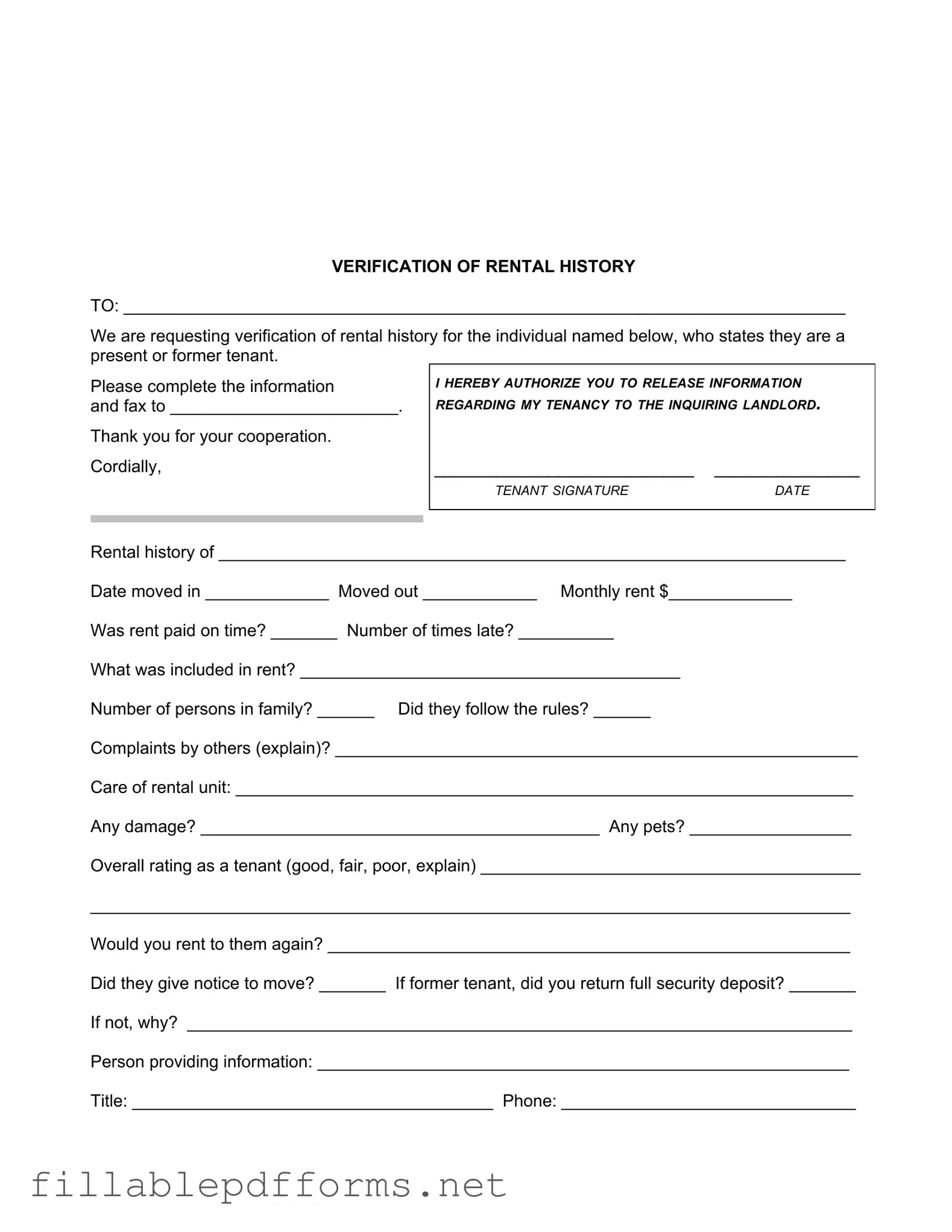The Verification Rental form serves as a crucial tool for landlords and property managers seeking to assess the rental history of prospective tenants. This form is designed to gather essential information about an individual’s past tenancy, including details such as the duration of their stay, rental payment history, and overall conduct as a tenant. By requesting verification from previous landlords, this form ensures that potential tenants are evaluated based on their actual rental behavior. Key sections of the form prompt the previous landlord to provide insights into whether rent was paid on time, the number of late payments, and any issues related to property care or compliance with rental rules. Additionally, it inquires about the presence of pets, the condition of the rental unit upon move-out, and whether the security deposit was returned in full. Ultimately, the Verification Rental form not only facilitates informed decision-making for landlords but also helps maintain a fair and transparent rental process for tenants.
